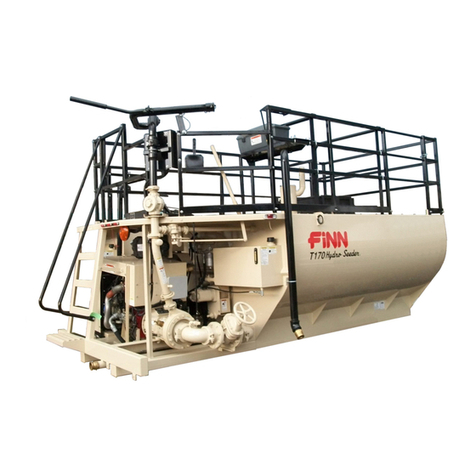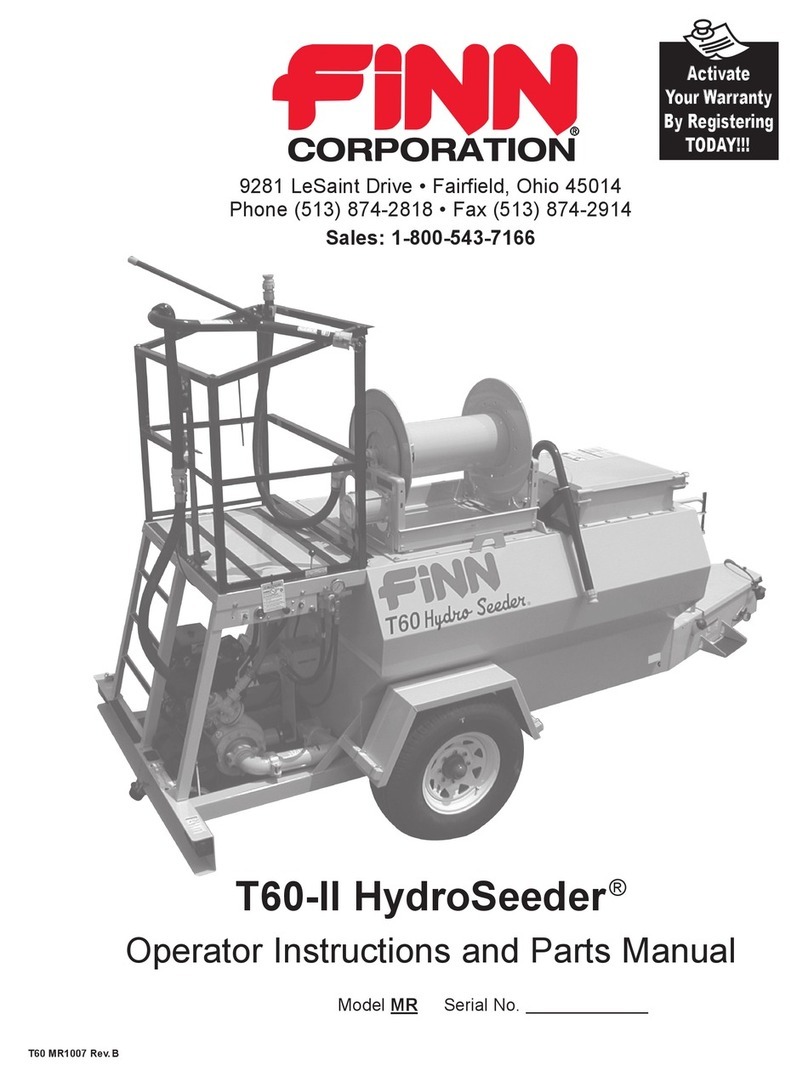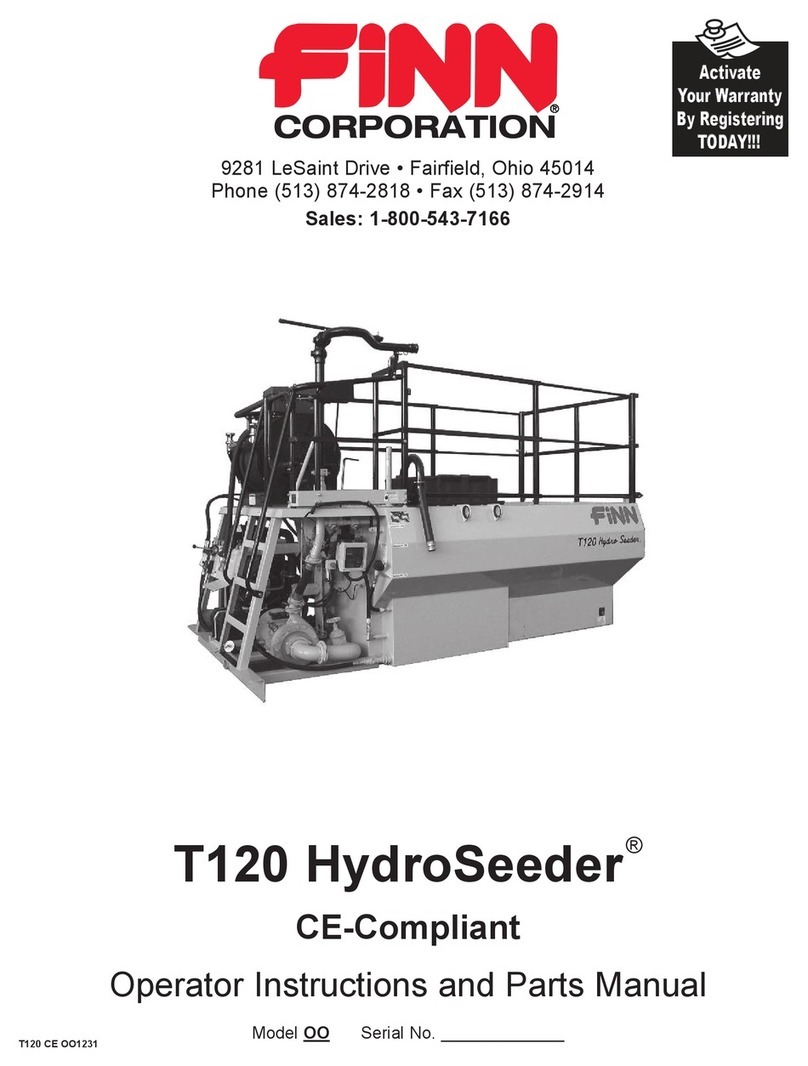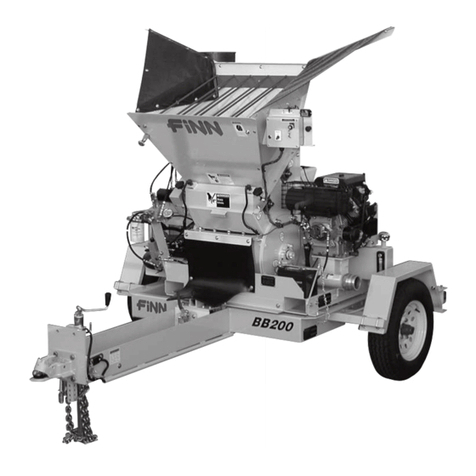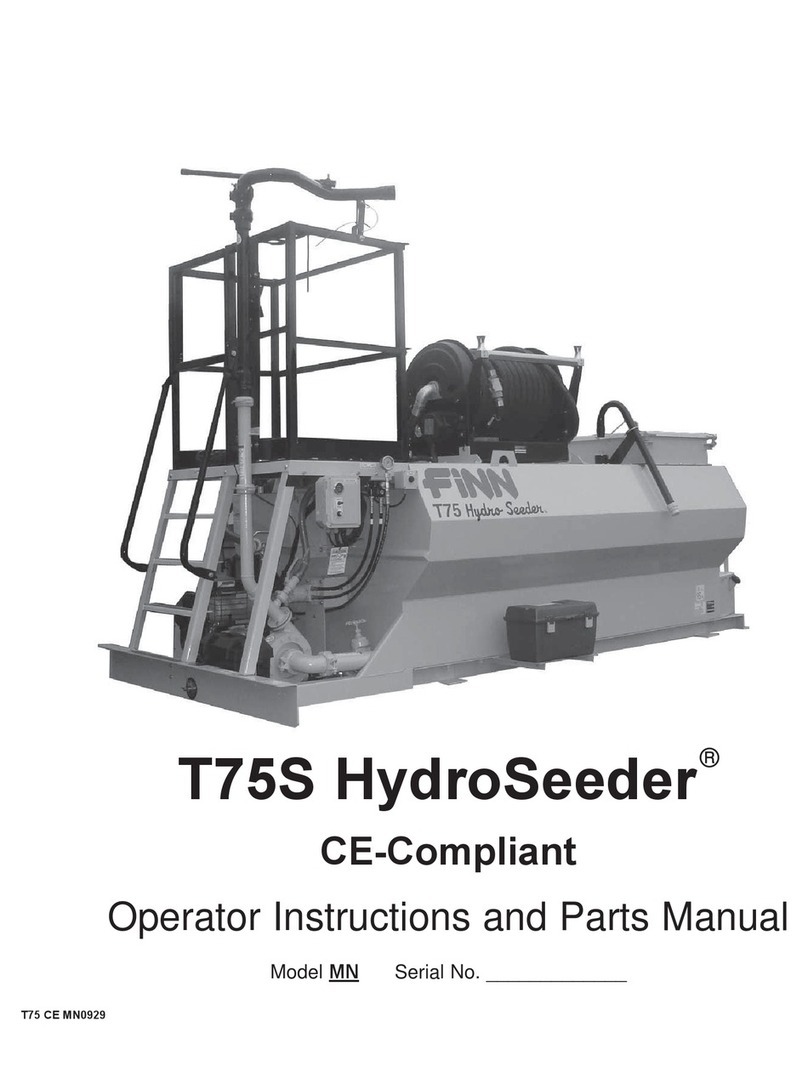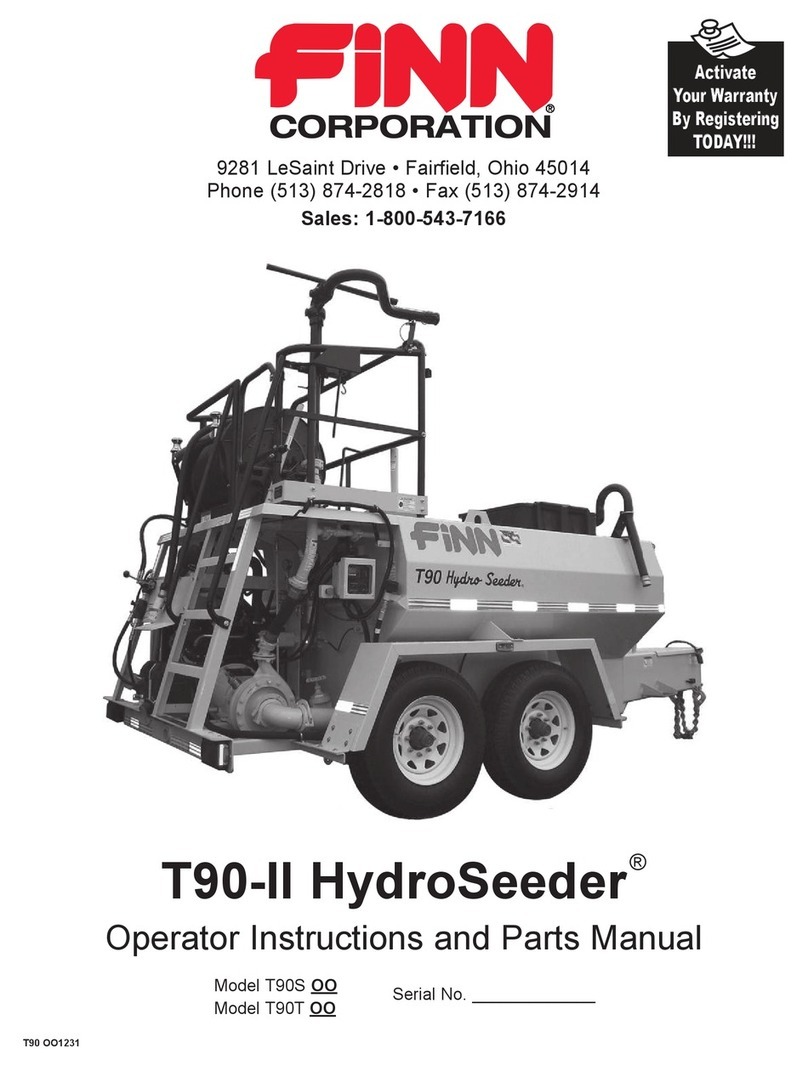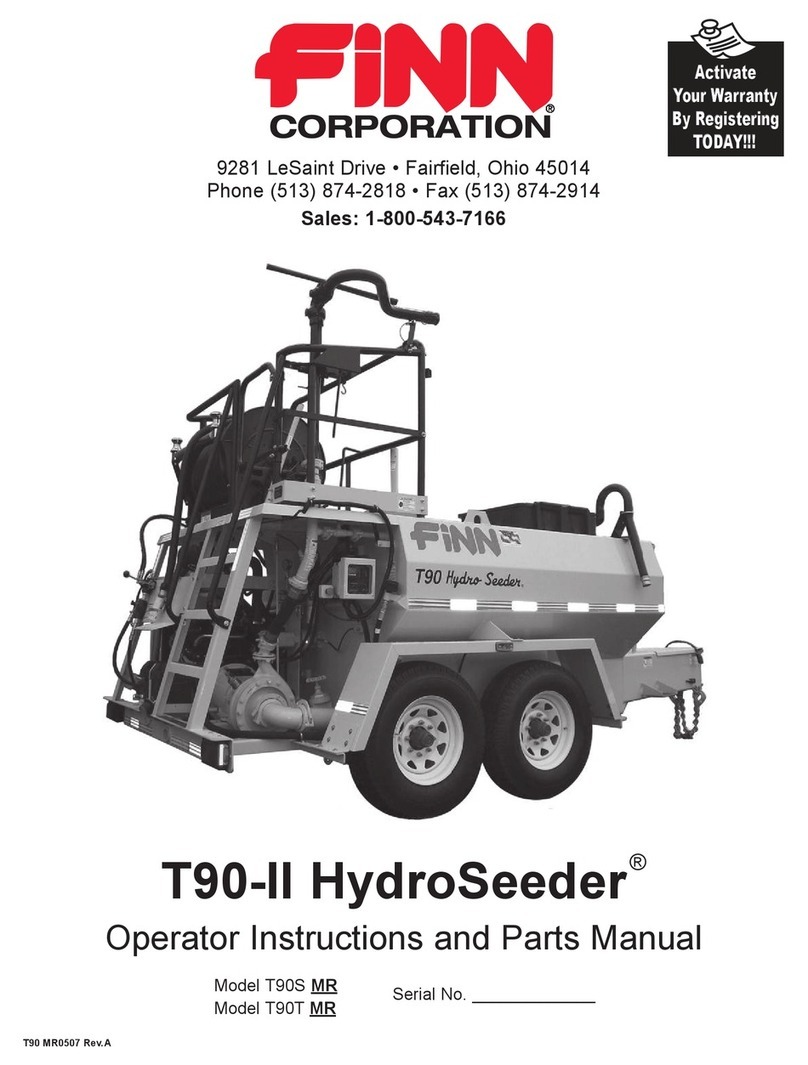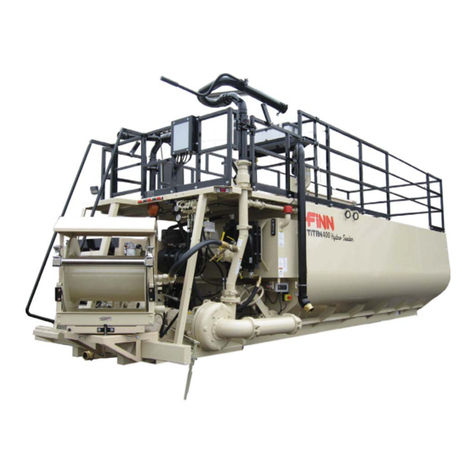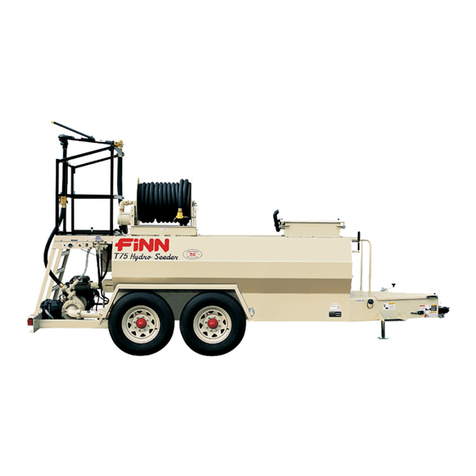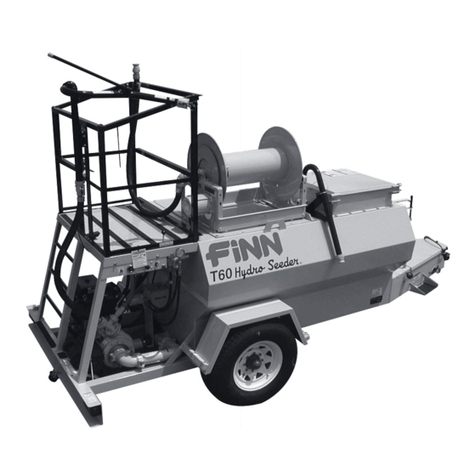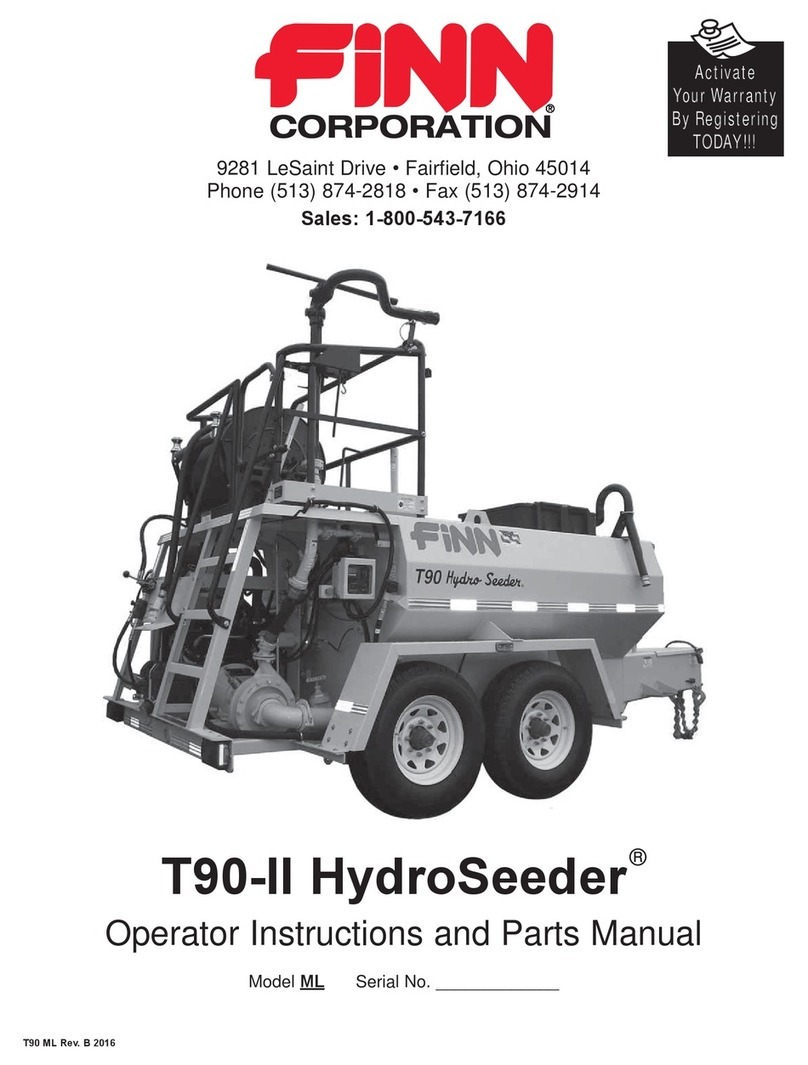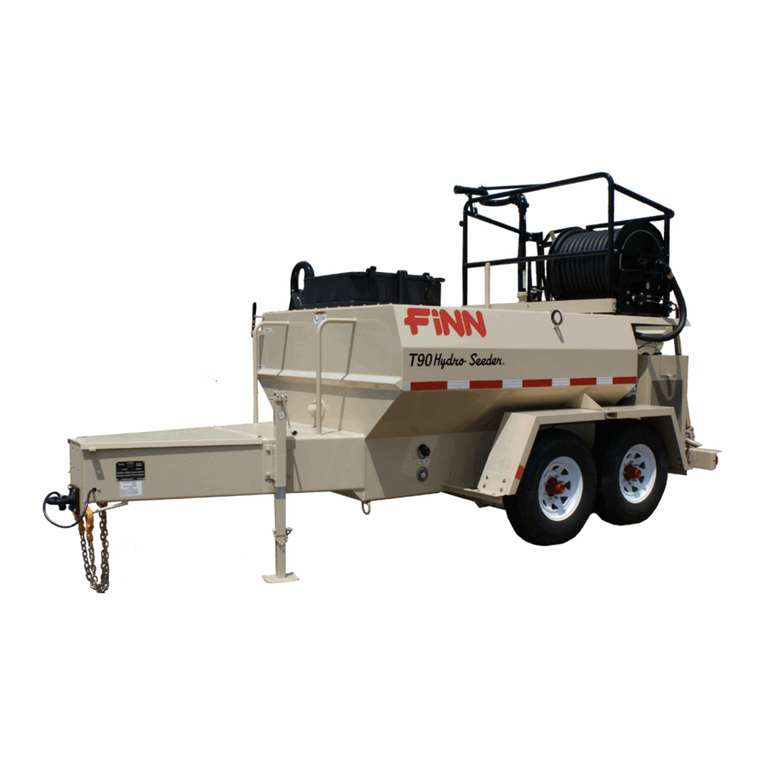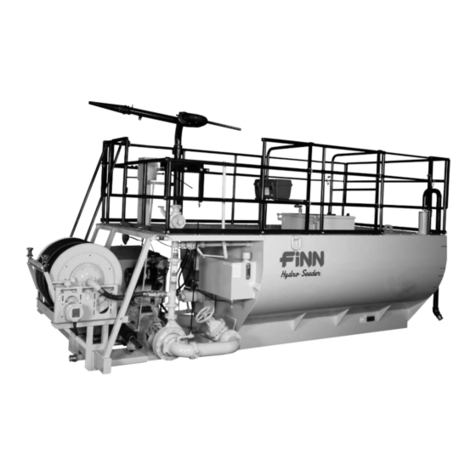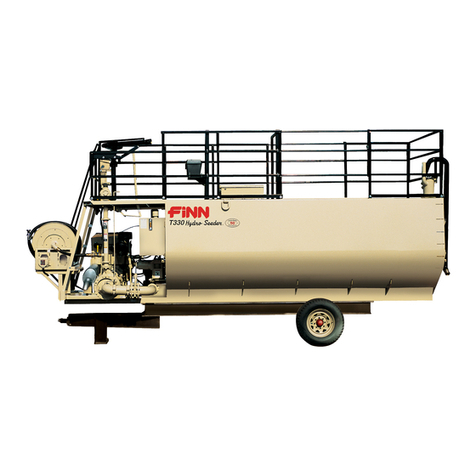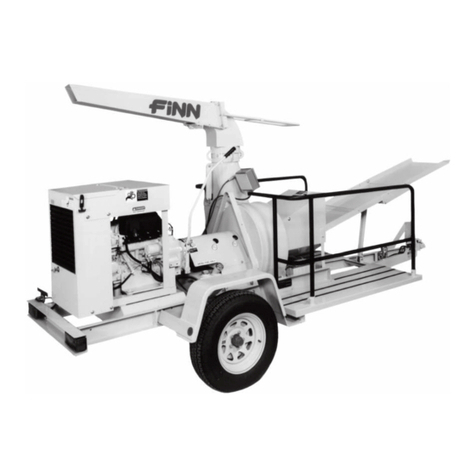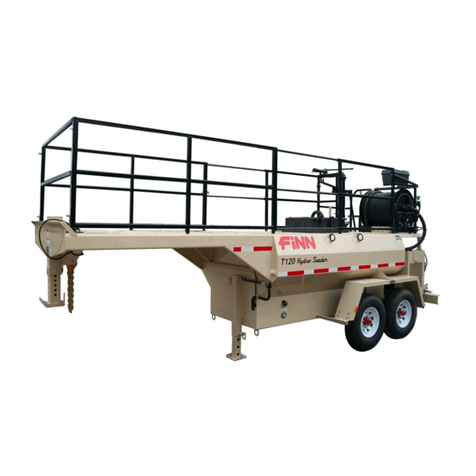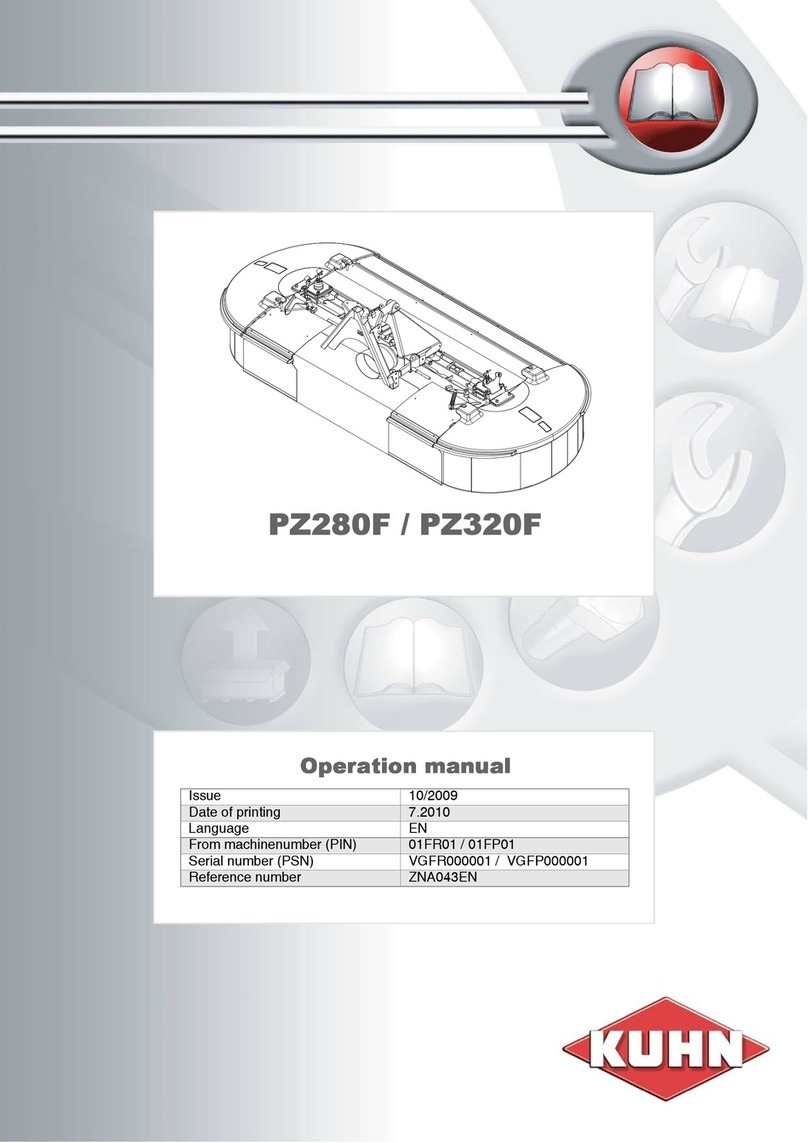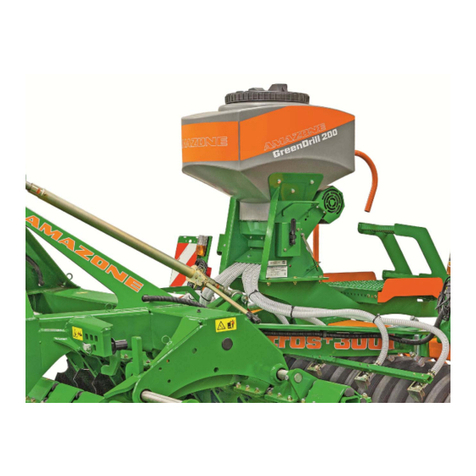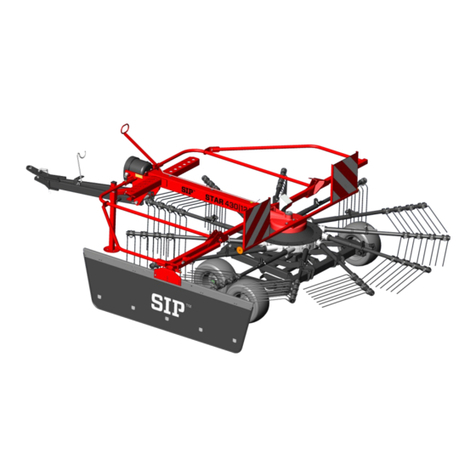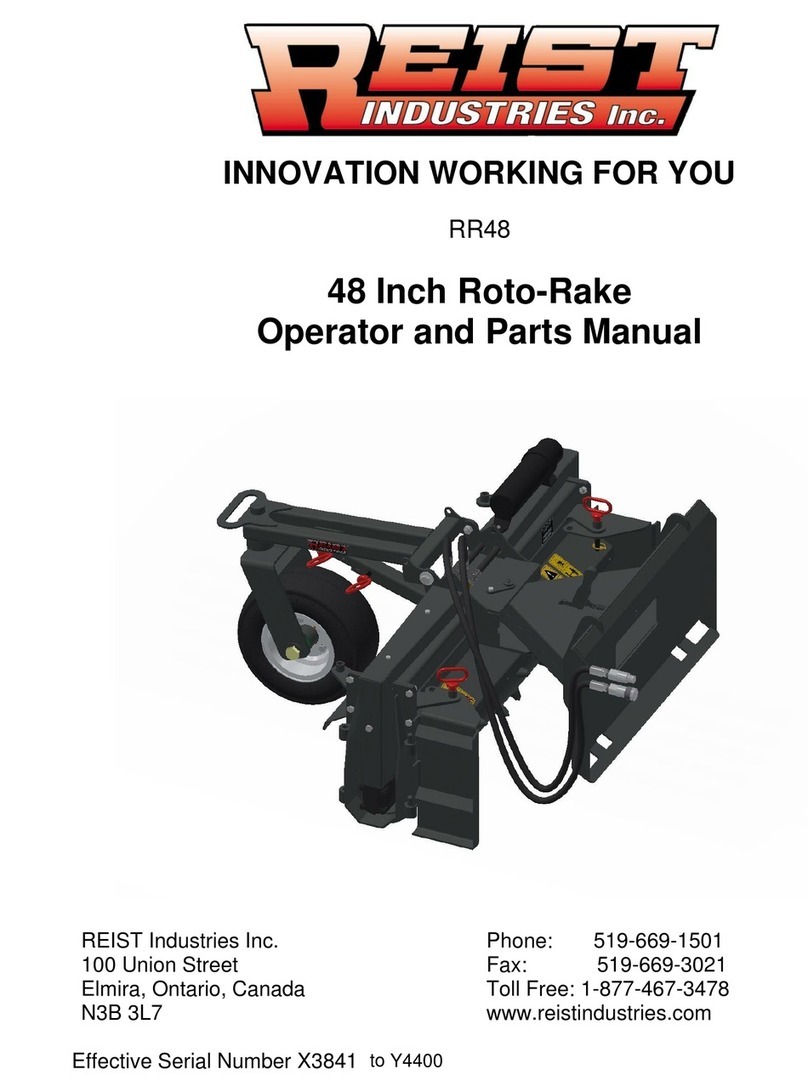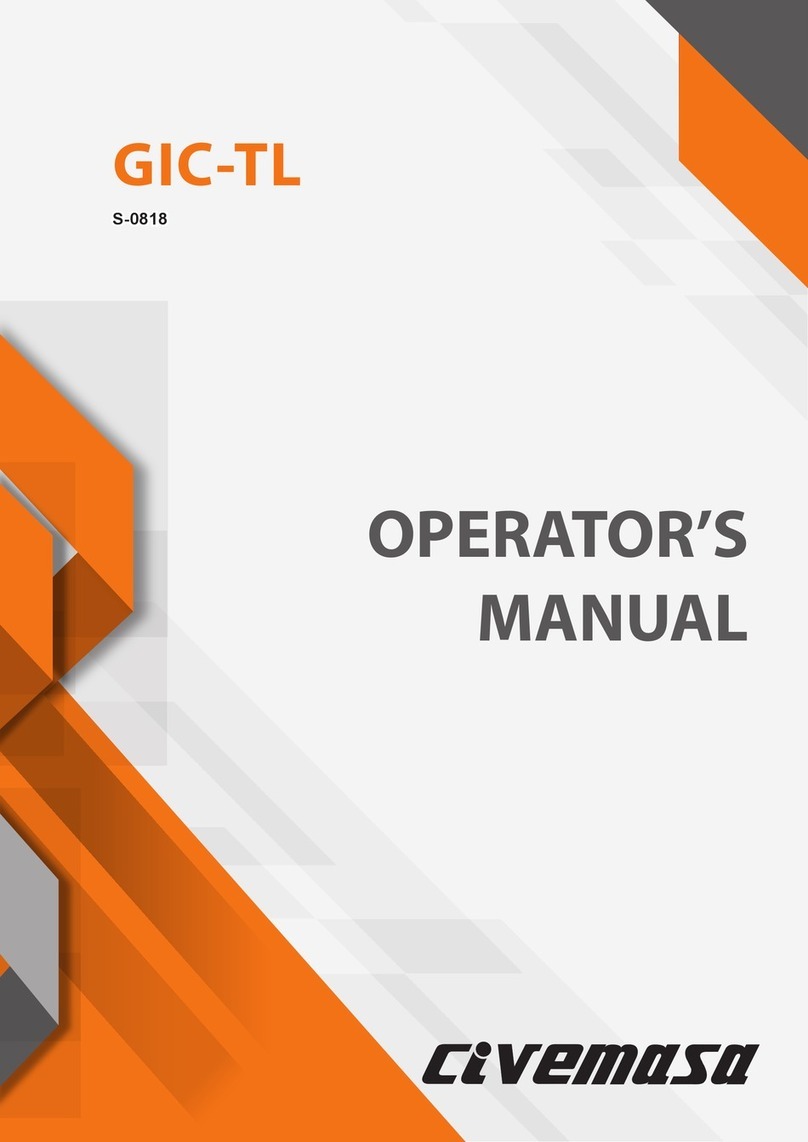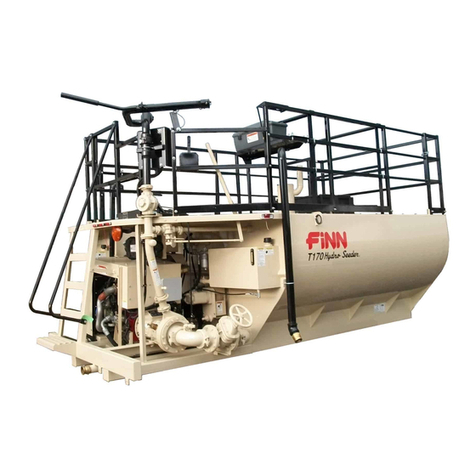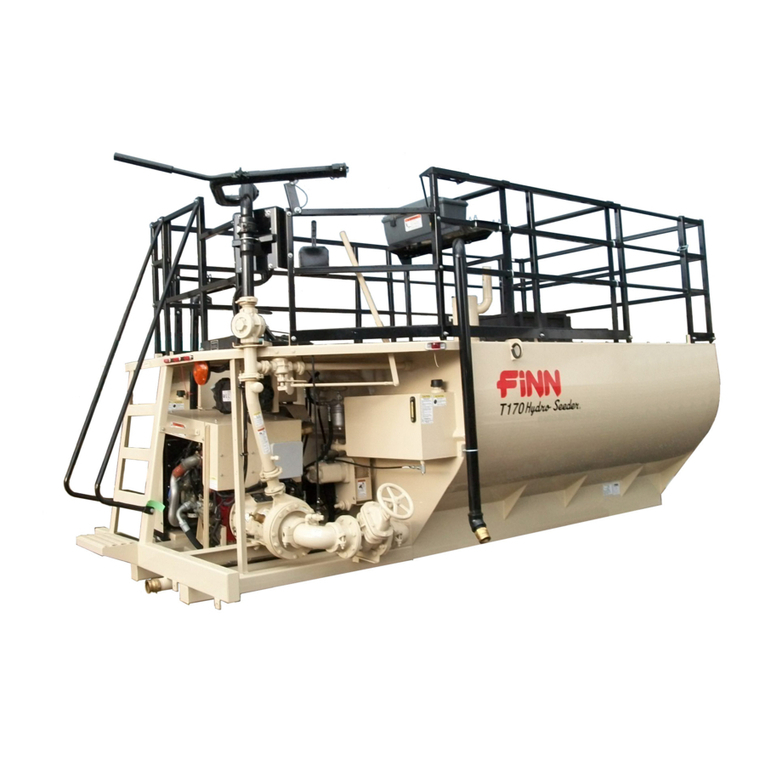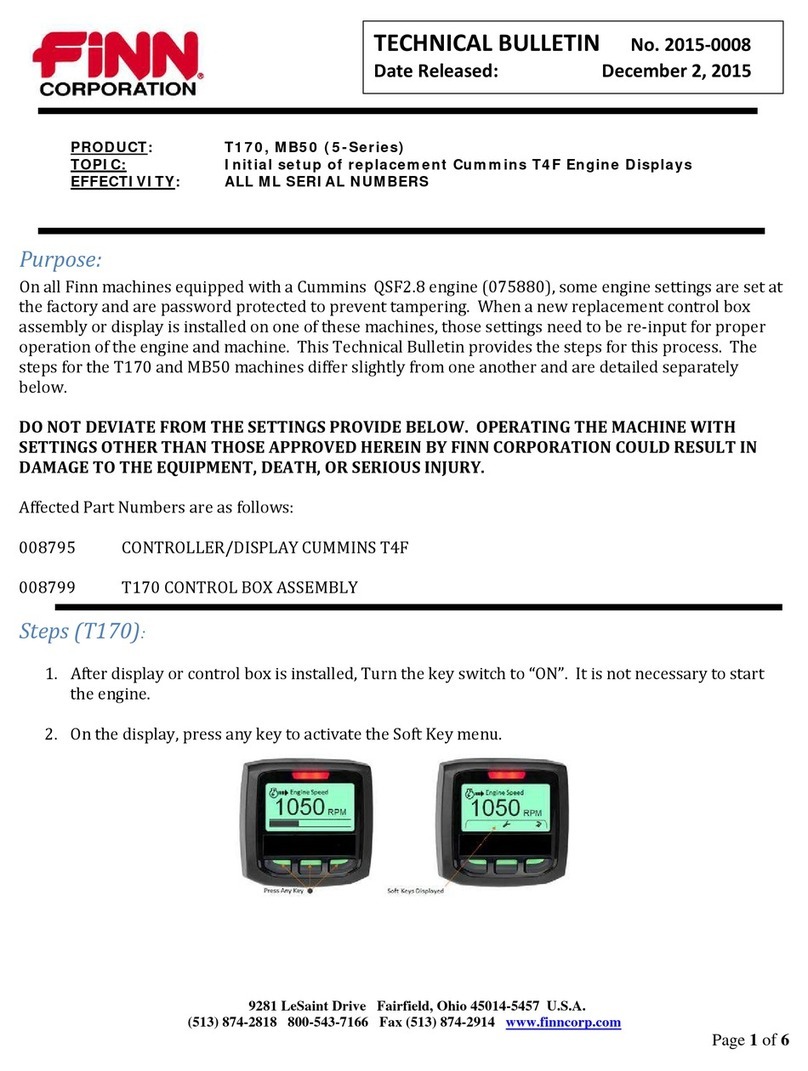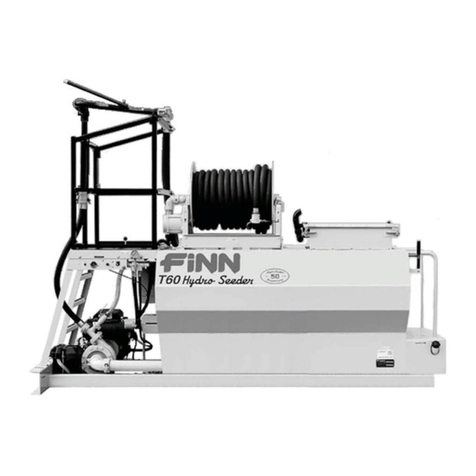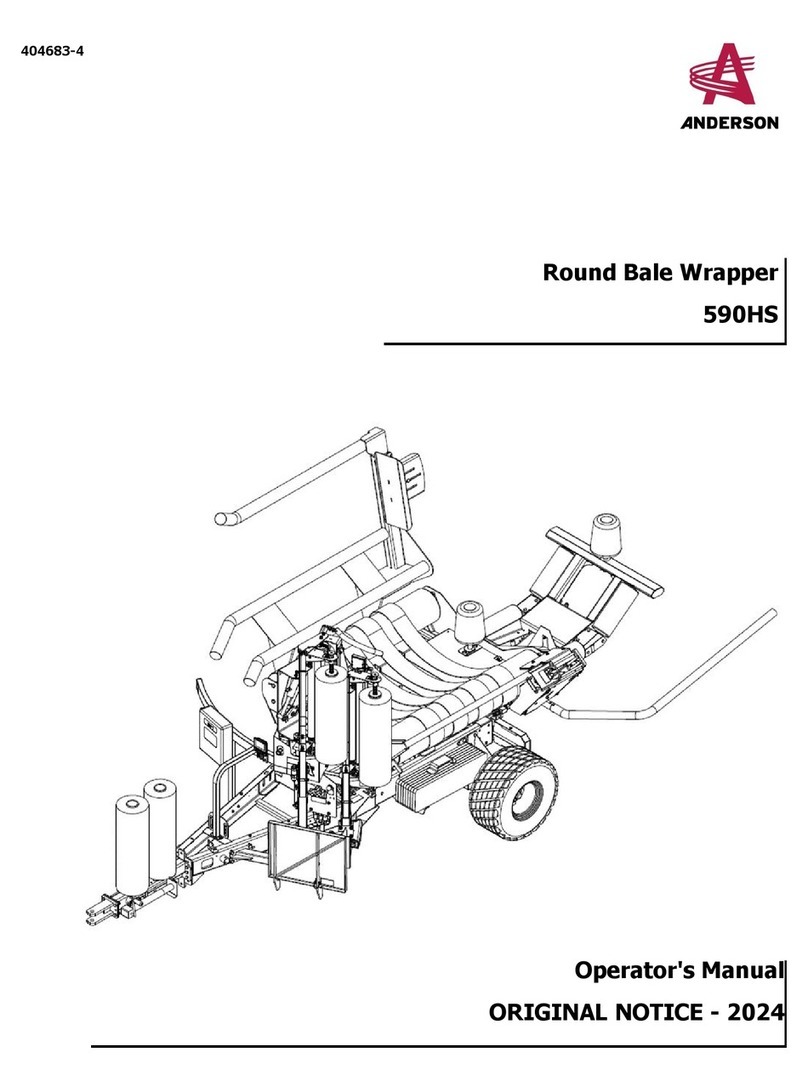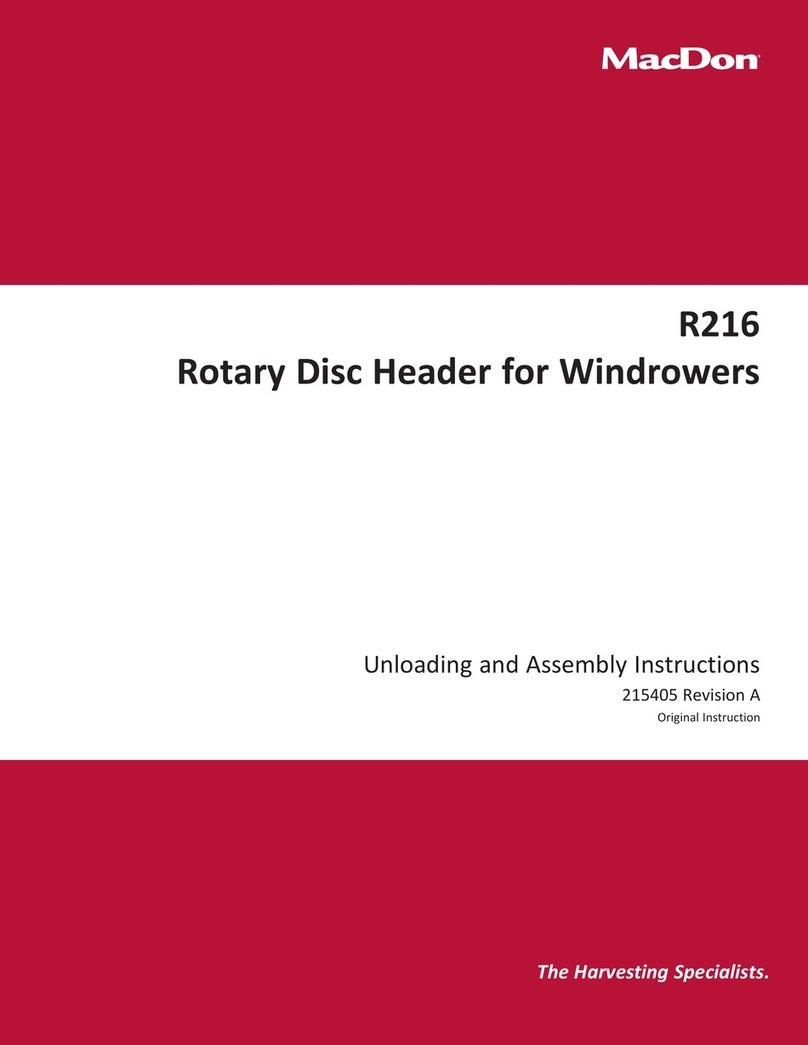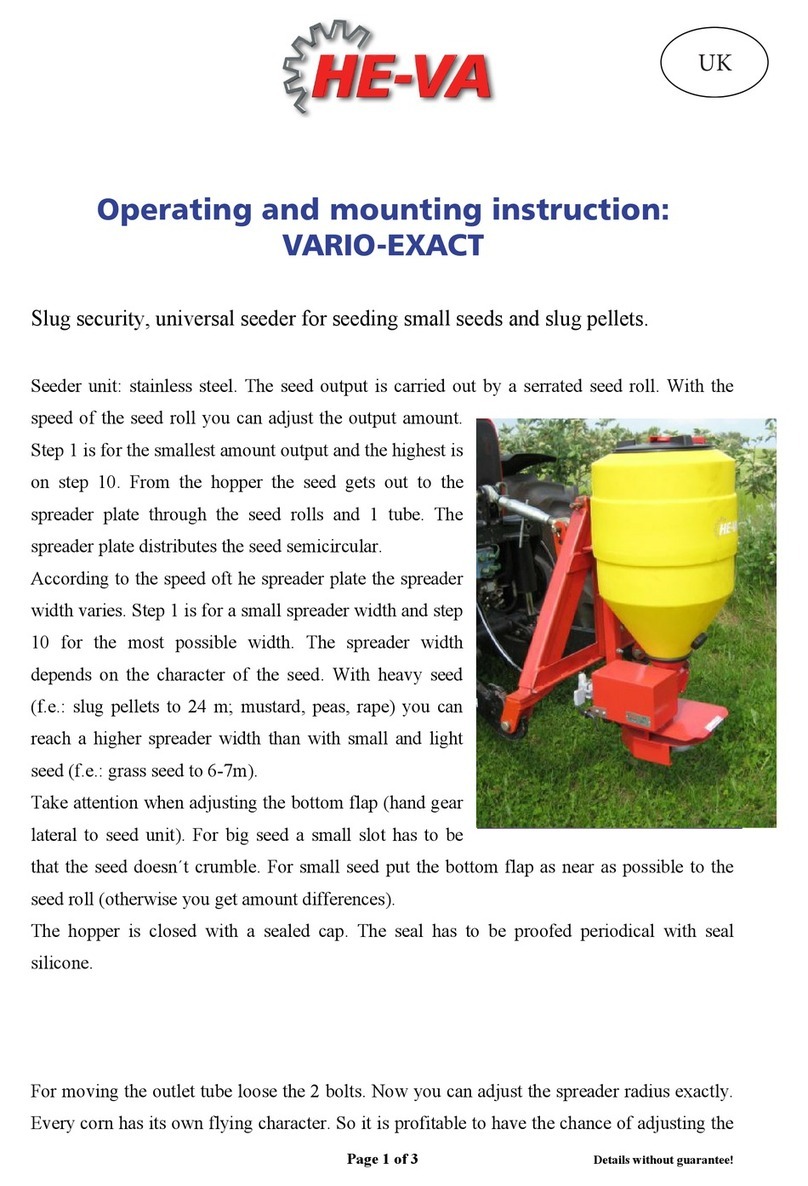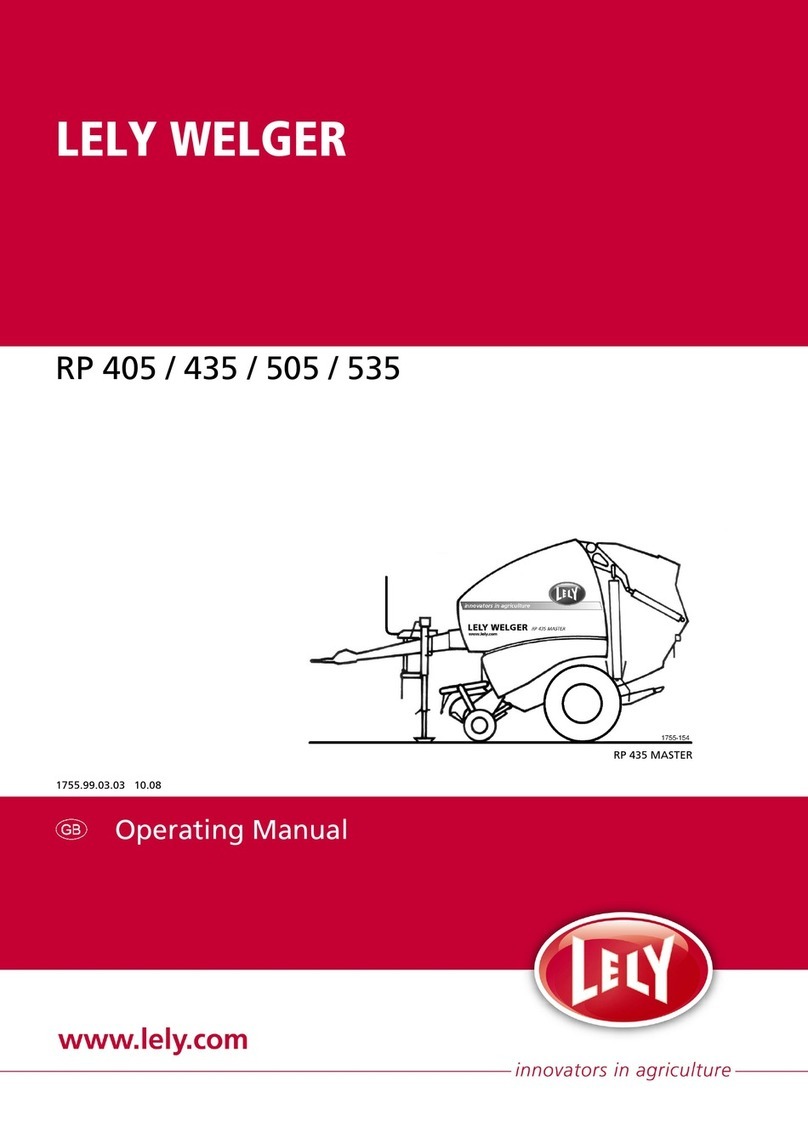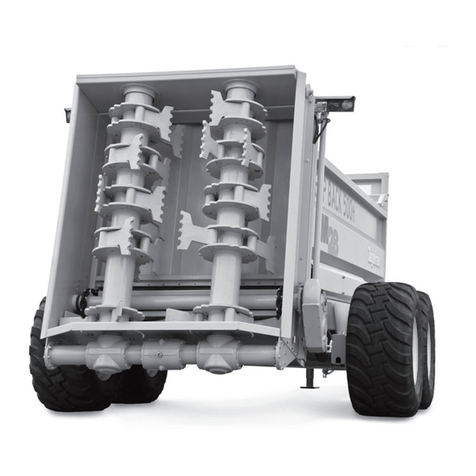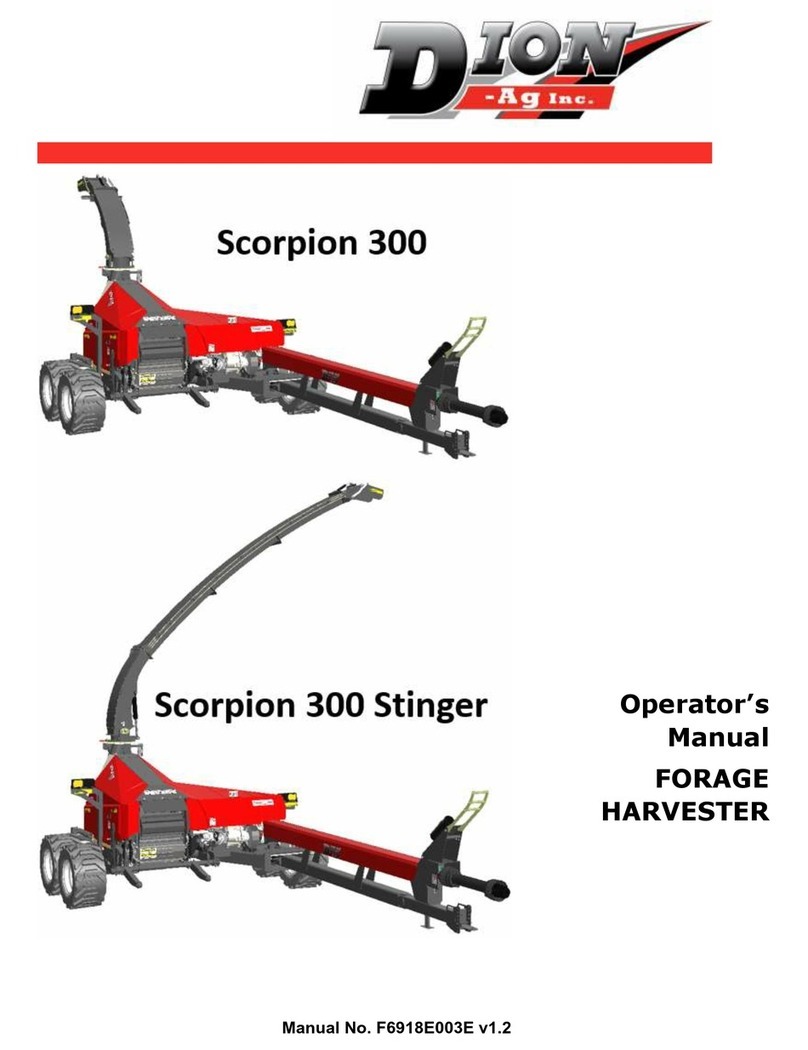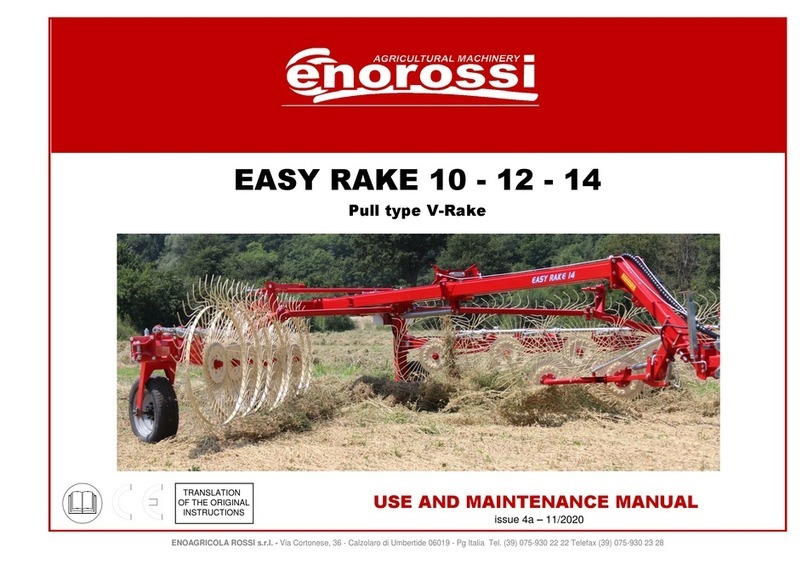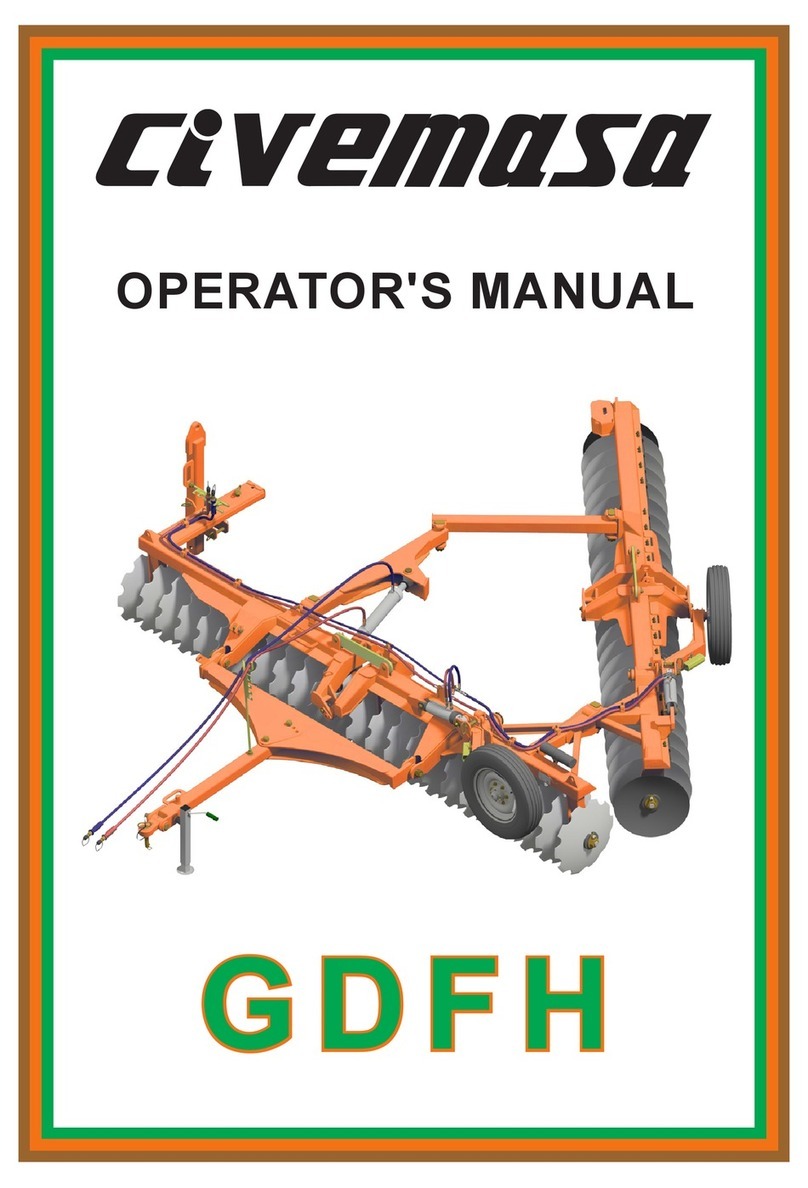
4
HYDROSEEDER®SAFETY
SUMMARY SECTION
IV. MAINTENANCE (Continued)
4. Certain
hydroseeding
amendments, when
combined with or
without the addition
of water or heat or
the element of time,
may react causing
harmful or deadly
gasses. Consult
your material
suppliers regarding reactivity information. The slurry
tank must be flushed and drained after each day of
operation.
5. Your slurry tank may be considered a confined space
by OSHA under 29 CFR 1910.146. Before entering
any confined space, your company must develop a
procedure for safe entry. Make sure your company’s
plan meets all the requirements of 29 CFR 1910.146,
or local legal requirement, including the following:
a) Drain, flush, and ventilate tank interior.
b) Turn off engine, disconnect
battery cables, and perform lockout/
tagout procedures
(29 CFR 1910.147).
c) Provide continuous ventilation or proper breathing
apparatus.
d) If tank must be entered, personnel entering the
tank must be tethered to a lifeline.
e) Provide a stand-by individual outside of tank who
is able to communicate with person inside and haul
him out with the lifeline if necessary.
6. Before loosening any clamps or
opening any valves, determine if
material in the line is hot by feeling
the pipe. Do NOT allow material
to come in contact with personnel.
Severe bodily injury could result.
7. On trailer units, perform general
maintenance such as checking the
safety chains, hitch and hitch bolts,
tires, and brakes. Repair or replace
if worn or broken. Never operate
machine on improperly inflated or
damaged tires. Always use a safety
cage or cable restraints when inflating a repaired tire.
8. Radiator maintenance: Liquid cooling
systems build up pressure as the
engine gets hot. Before removing
radiator cap, stop the engine and let
the system cool. Remove radiator cap
only after the coolant is cool.
9. Battery maintenance: Lead-acid
batteries contain sulfuric acid, which
will damage eyes or skin on contact.
Always wear a face shield to avoid
getting acid in the eyes. If acid
contacts the eyes, flush immediately
with clean water and get medical attention. Wear
rubber gloves and protective clothing to keep acid
off skin. Lead-acid batteries produce flammable and
explosive gasses. Keep arcs, sparks, flames, and
lighted tobacco away.
10. Filling of fuel: Never fill the tank with
the engine running, while smoking,
or when near an open flame. Never
smoke while handling fuel or working
on the fuel system. The fumes in an
empty fuel container are explosive.
Never cut or weld on fuel lines, tanks, or containers.
Move at least 10 ft. (3 m) away from fueling point
before starting engine. Wipe off any spilled fuel and let
dry before starting engine.
IMPORTANT: Be careful not to allow fuel, lubricant,
hydraulic fluid, or cooling fluids to penetrate into the
ground or be discharged into the water system. Collect
all fluids and dispose of them in accordance with local
municipal regulations.
11. Diesel fuel or hydraulic fluid under
pressure can penetrate the skin or
eyes and cause injury, blindness, or
death. Pressure may build up in the
hydraulic system; use caution when
removing the cap.
12. Make certain that all decals on the machine are
maintained in good legible condition. Replacement
decals are available through FINN Corporation by
specifying part number shown in the lower right-hand
corner of the decal. See page 5 for the current safety
decals mounted on the unit. See the Parts Section of
this manual for the location and quantity of all decals
on this unit.
13. Do not pressure wash this unit. Do
not pressure wash around any control
boxes, radio remotes or control
panels. Pressure washing this unit
can cause damage to the electrical
systems and components and also
cause the unit to not function. Pressure washing
injects water into sensitive electrical components. To
clean the unit, use a method that controls the amount
of water that is applied to surface of the unit.




















